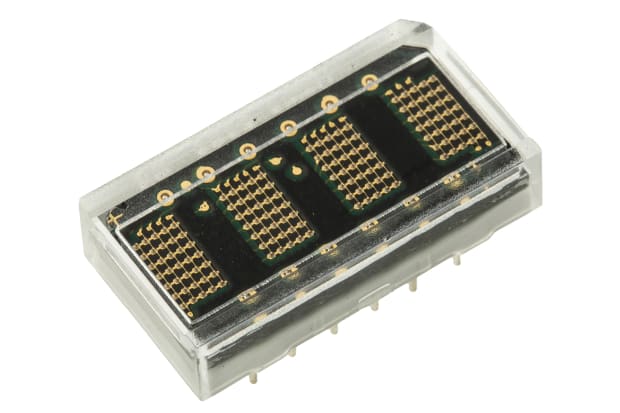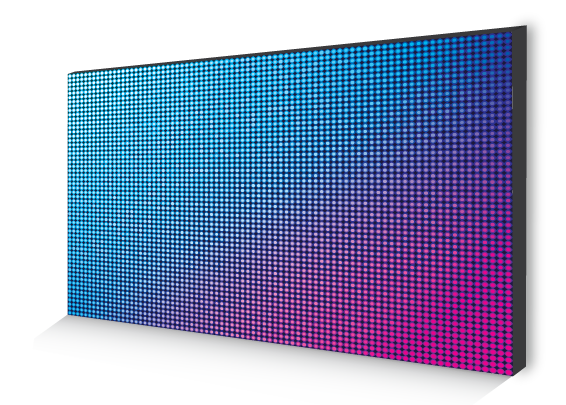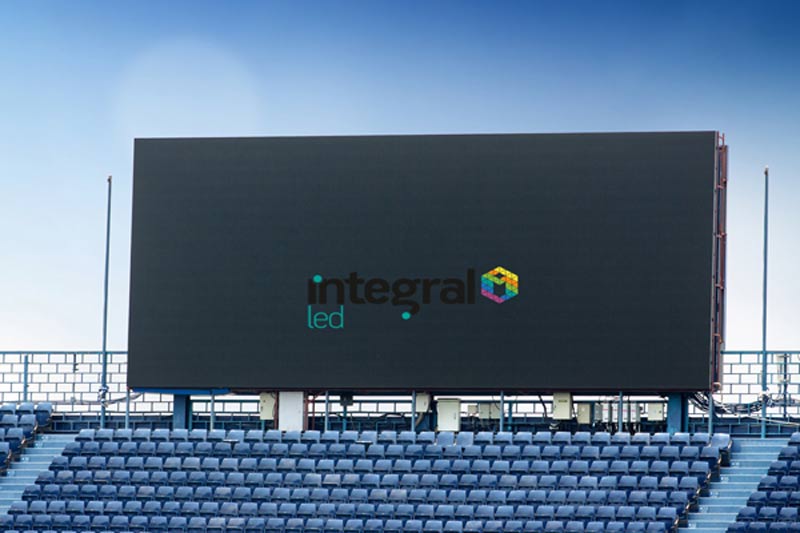Be aware of the brightness and contrast ratio when looking at LED screens as they have a significant impact on the quality of the display as well as how it appears, particularly under different lighting conditions. Here's the reason why they're crucial:
1. Visibility in Different Lighting Conditions
Brightness: in nits (candelas) per square meter It is a measure of how clear the display can be under different lighting conditions. Outdoor displays must be of a high brightness, which is typically between 5,000 and 10,000 nits. Indoor displays generally require lower levels of brightness between 500 and 1,500nits. However, brightness should be adjustable in order to suit different environments.
A high brightness is essential when the display is installed in brightly lit areas or outdoors. Lack of brightness could make the display unusable since the display content could be smudged or rendered ineffective under direct sunlight.
2. Clarity of the image and Image quality
Contrast ratio The term "contrast" refers to the contrast in brightness between the brightest white and the darkest black. A greater contrast ratio enhances image depth, making colors more vibrant and increasing the overall clarity and sharpness of the images. This is essential when displaying videos or high-contrast pictures.
Displays with high ratios of contrast are better able to handle complex media with different brightness levels. Examples include films or advertisements, as well as live broadcasts. A low contrast display might cause dark areas to appear gray which could lessen the visual impact.
3. Color Accuracy and Visual Impact
Brightness, Color Accuracy - The brightness of a display can impact the accuracy of color. Color accuracy can be improved with displays that have a consistent brightness. This is important in branding, advertising, and other areas of content in which color accuracy is crucial.
High contrast can increase the brightness that is perceived. Although the nit scores of two displays are identical one with a a higher ratio of contrast will display brighter images.
4. Energy Consumption
Brightness and power efficiency Brighter levels typically require more power. When displays are in use 24/7 or part of large-scale installations, it is essential to be able to balance brightness demands as well as energy efficiency. With the advancements in the field of LED technology, displays are now able to be more efficient and offer bright and high-quality brightness.
5. Content Versatility
Different types of content require different levels of brightness The requirements for brightness vary based on the type of content being static images, text or video. Text-based content for example, benefits from the highest contrast to make it more easy for users to read, whereas video-based content might require both brightness and contrast.
Application: In settings where there is a lot of content changes (e.g. advertisements screens and display for events) The ability to adjust contrast and brightness is beneficial. The display can then be adjusted to the needs of different types of content.
6. User Experience
Displays offering manual or automated brightness adjustments are able to give a more pleasant experience to the user by adjusting to changing light conditions. This will ensure that the display remains accessible at all times, without creating eye strain or reflections.
Contrast ratio and comfort for the eyes: High contrast ratios can help reduce eye fatigue, and make it easier for the viewer to remain engaged with the content, especially for public displays, events or retail environments.
Conclusion:
The brightness and contrast ratio of a LED display is crucial to function effectively in its intended environment. This will ensure that the information is vibrant, clear and easy to read. These aspects have a significant impact on how the LED display performs in its desired environment, regardless of whether it's outdoors, indoors or in the brightness or dim settings. Combining these factors with the energy efficiency and requirements for content can help you choose the best display for your requirements. Take a look at the best creative led displays for blog tips including led screen rental, led wall, transparent led panel, led screen for outdoor, advertising displays, board led, led screen transparent, church video wall, led display device, led screen rental and more.

What Is The Importance Of The Weight And Portability Factor When You Are Researching Led Displays?
It is very important to weigh and consider the versatility of LED displays while researching the possibilities, particularly in certain situations in which flexibility, installation and ease-of-transport are major concerns. Why these factors matter:
1. Simple Installation and Installation
Weight: Lighter LED displays are easier to manage when they are being installed. This is particularly true for environments that require displays to be affixed to ceilings, walls and other structures. The installation of massive displays can be complex and costly, since they require robust support systems.
Portable displays allow for easy installation and removal. They are ideal for tradeshows, temporary installations as well as events. The lightweight design allows them to be transported easily and set up to save time and energy.
2. Staging and Staging
Portable and lightweight LED panels play an important part in the rental and staging markets that requires displays to move regularly from one location to another. They lower the cost of transportation and enable a faster turnaround between events and minimize the risk of damage.
Modularity: Portable LED displays usually have modular designs, allowing them to be assemble and taken apart. This flexibility is essential for modifying display configurations to meet different event needs.
3. The structural needs
Support Structures. For larger LED displays you'll require more complex and expensive mounting structures. They can add costs and complexity to the installation. Lighter displays can be supported with simpler and less costly structures. This makes them more flexible in different situations.
Venue Constraints: Some venues may have weight restrictions on their structures, particularly for wall or ceiling mounts. It is important to choose an installation that is light to fit inside the venue's weight limits.
4. Transport and Logistics
Shipping Costs: LED display weight directly impacts shipping and handling costs. It is cheaper to ship lighter displays especially for large-scale installations.
Storage and Handling: Lightweight and portable displays are easier to store and transport, requiring less space and simpler logistics, which can be crucial for companies that frequently transport displays to various locations.
5. Flexibility of Use
Reconfigurability. Lightweight, portable display units are typically modular. They are able to be reconfigured to suit different purposes. This is especially beneficial in installations that require creativity, and it is essential to be flexible in design.
Application Versatility: These displays are versatile enough to be used in a vast variety of events, from small pop up events to huge outdoor events. They provide a level of versatility that's not offered by heavier and more cumbersome displays.
6. Safety Factors
Lighter displays reduce the risk of damage and accidents during handling. This is especially important in environments where displays will be moved and adjusted frequently.
Compliance: Weight limits may be determined by regulations regarding safety in certain cases, specifically for installations that are placed in public areas. Making sure that the display is in compliance with the requirements for compliance is essential to keeping out concerns about compliance.
7. Energy Efficiency
Power Consumption: Although it isn't directly connected to weight, light displays are typically constructed with energy efficiency in the back of their minds. Displays with LEDs that are portable may consume less power. This is advantageous in situations that are power-hungry or when reducing operational costs is important.
Conclusion:
LED displays should be considered for their size and weight, especially when used in situations that require frequent movement. These aspects affect not just the ease of installation and transportation but also the flexibility, safety, and overall cost of using the display. It is important to consider the weight and portability thought of when looking at LED display options when you are required to move frequently, swiftly setup, or meet particular structural or safety specifications. Read the most popular led rental screen for blog tips including tv the wall, led display transparent, translucent led screen, led display screen, led in the wall, led wall, led display screen rental, led outdoor display screen, digital display, transparent led panel and more.

When It Comes To Led Displays, How Important Are Compatibility And Content Management System (Cms).
The compatibility of LED displays and the CMS (Content Management System) are key factors when researching them, particularly for applications that require content to be frequently updated, distributed across many locations, integrated into digital systems, etc. CMS compatibility and management of content are essential for LED displays.
1. Content Management is simple
CMS Functionality. A powerful CMS lets you easily plan and control your content on LED displays. It offers a user-friendly interface for uploading content and organizing playlists. It also lets you schedule the display time.
The importance. For companies that have to constantly update their content (such as retailers, advertising networks as well as event venues and locations), a powerful CMS streamlines their operations by reducing the amount energy and time required to maintain their displays.
2. Flexible Remote Controls and Remote Control
Remote Management - A good CMS permits remote management, which means that the content can be changed anywhere. This is particularly important for organizations that operate multiple displays across different sites since it gives them central control as well as ensuring consistency in communication.
Remote management tools can be used in scenarios where digital signage networks are being used across different locations.
3. Scheduling and Automation
Content Scheduling. A software for managing content with scheduling functions gives you to schedule beforehand the content that are displayed. This is a great way to target certain people at specific times during the day or during occasions that require special attention.
Automated updates: Automated updates eliminate the requirement for manual updating, saving you time and making sure your information is updated. This is especially useful in environments that are dynamic, like airports, hotels or big venues.
Schedule and automation functions in the CMS can be vital to businesses that must manage content all the time for example, large retailers, news broadcasters, transportation hubs, etc.
4. Compatible with the existing systems
Integration: It is essential to ensure that the media players, software or IT infrastructure are compatible with each other. CMSs that are integrated with digital tools and platforms like tools for content creation and analytics tools, or CRM systems are of great value.
Application: In settings in which digital signage must integrate with other systems, for instance smart cities, retail settings with customer data integration, or large corporate networks Compatibility ensures an efficient operation and enhances the effectiveness of the LED displays.
5. Scalability
Future Expansion The CMS that is scalable CMS will grow to meet your requirements, allowing you to quickly add additional displays, manage more content libraries, or even expand to new locations without needing to overhaul your entire system.
Application: Companies that intend to expand, like retail chains, hospitality groups or multinational corporations, can make use of a CMS that is scalable so that their digital signage infrastructure will be in a position to expand with them.
6. Support for Content Variety
Content Types The CMS must be able to provide a variety of formats for content including images, videos and texts. Interactive content is also available. This flexibility will allow you to create a variety of captivating content that is specifically tailored to the needs of your target audience.
Applications: The ability to display a variety of content is beneficial in settings that have a lot of diversity, such as educational institutions or entertainment venues as well as advertising networks.
7. Security and access for users
Role-Based Access A CMS that provides access based on role. control can grant different levels of authorization for various users. This is vital to ensure that only employees who are authorized is able to make important changes.
Security: Making sure that the CMS is secure is essential to guard against unauthorized access, which could lead to the display of inappropriate or harmful content.
Access and security features based on role are crucial for businesses that have multiple users who are responsible for their content. This is the case for large corporations, universities and the government agencies.
8. Content updates in real-time
Live Content Integration: In some applications, it's essential to be able to update content live or integrate feeds from live sources (such social media, news or live event coverage). This is essential for events, broadcasts and other scenarios that require prompt content.
Application: In settings including sports arenas and live event venues, such as broadcasting studios, news stations or news channels live updates of content is an excellent way to ensure that your viewers receive the most current information.
9. Analytics and Reporting
Performance Metrics: A good CMS will have analytics and reporting features which allow you to monitor the performance of your content. Understanding how viewers interact with content, its efficiency and ROI is crucial to optimize the content for the future.
Application: For companies who rely on data to drive decisions, such as retailers, advertisers or public information systems analytics and reporting capabilities are essential to understanding and enhancing the performance of their digital signage.
Conclusion:
A powerful CMS, as well as solid compatibility are essential elements of a successful LED strategy. They provide efficient content control, seamless integration into existing systems, as well as the capacity to accommodate a variety of evolving applications. It is important to consider the use of a CMS when researching LED displays. It must be compatible with your operational requirements, support a variety of types of content, provide solid security, and offer the tools required for efficient content delivery. These features do not just enhance the functionality of LED displays, but also maximize the impact and return on investment. Take a look at the recommended flexible led panels for site examples including display device, tv led wall, display light led, wall tv led, outdoor digital screens, led the wall, led display, led display device, transparent led display screen, led screen transparent and more.
